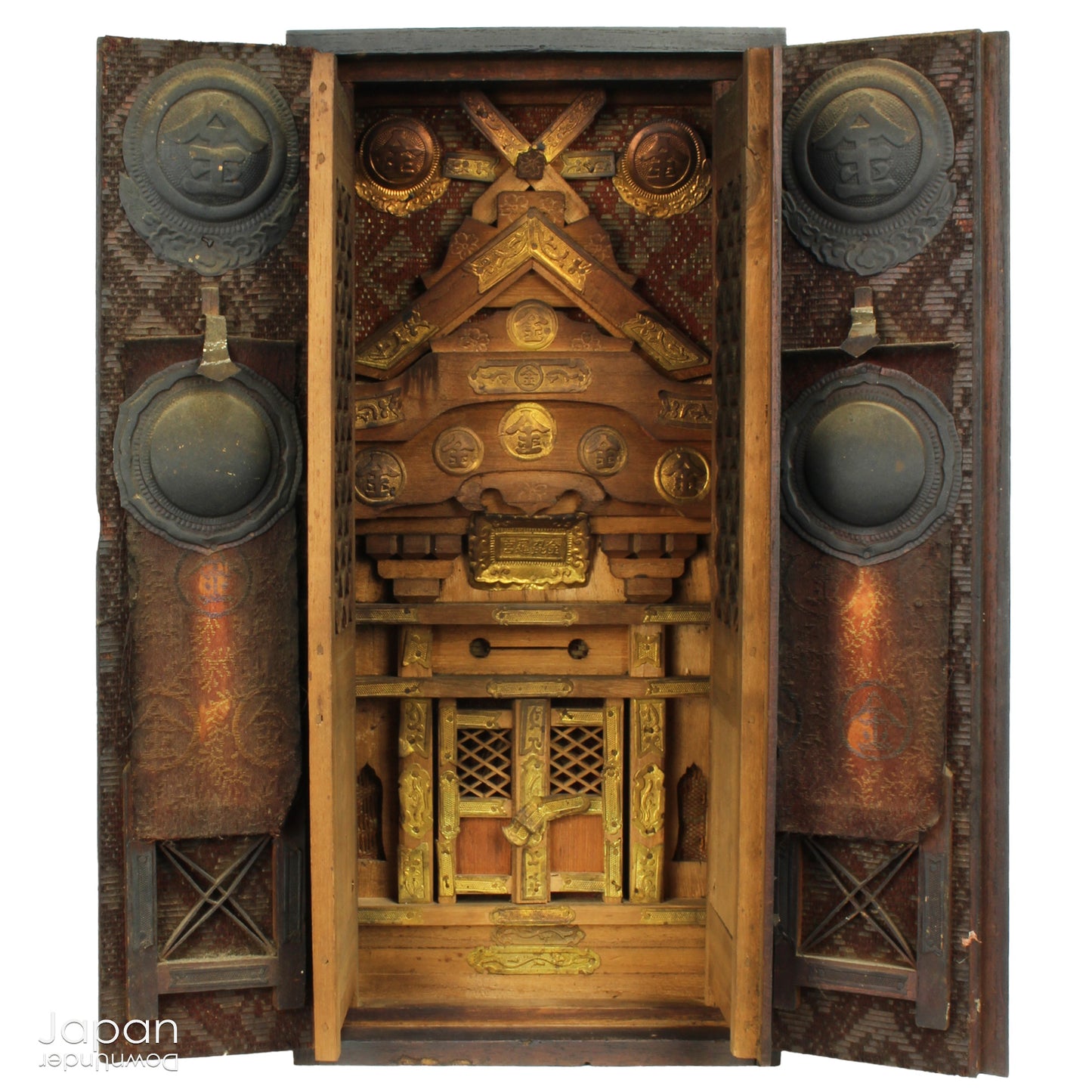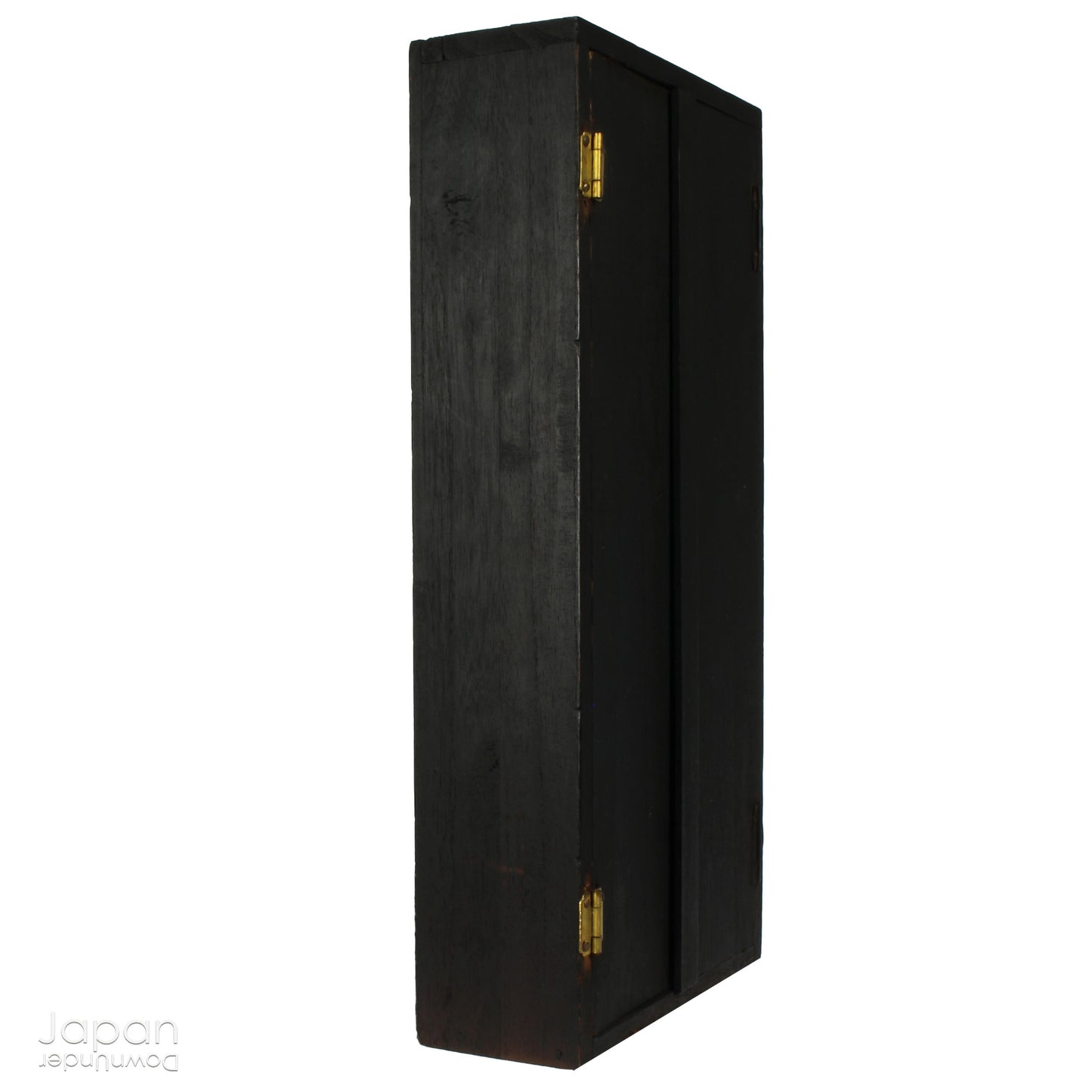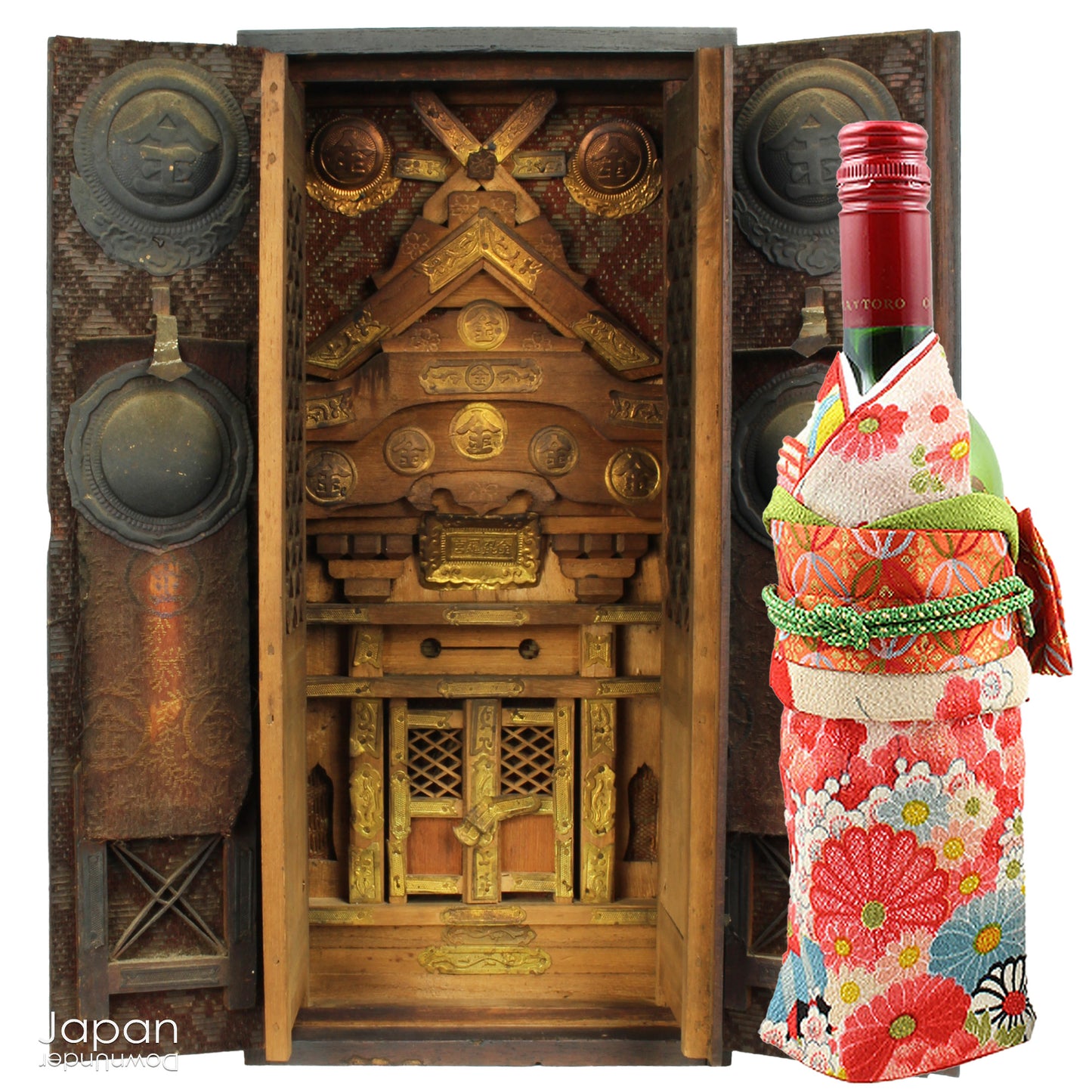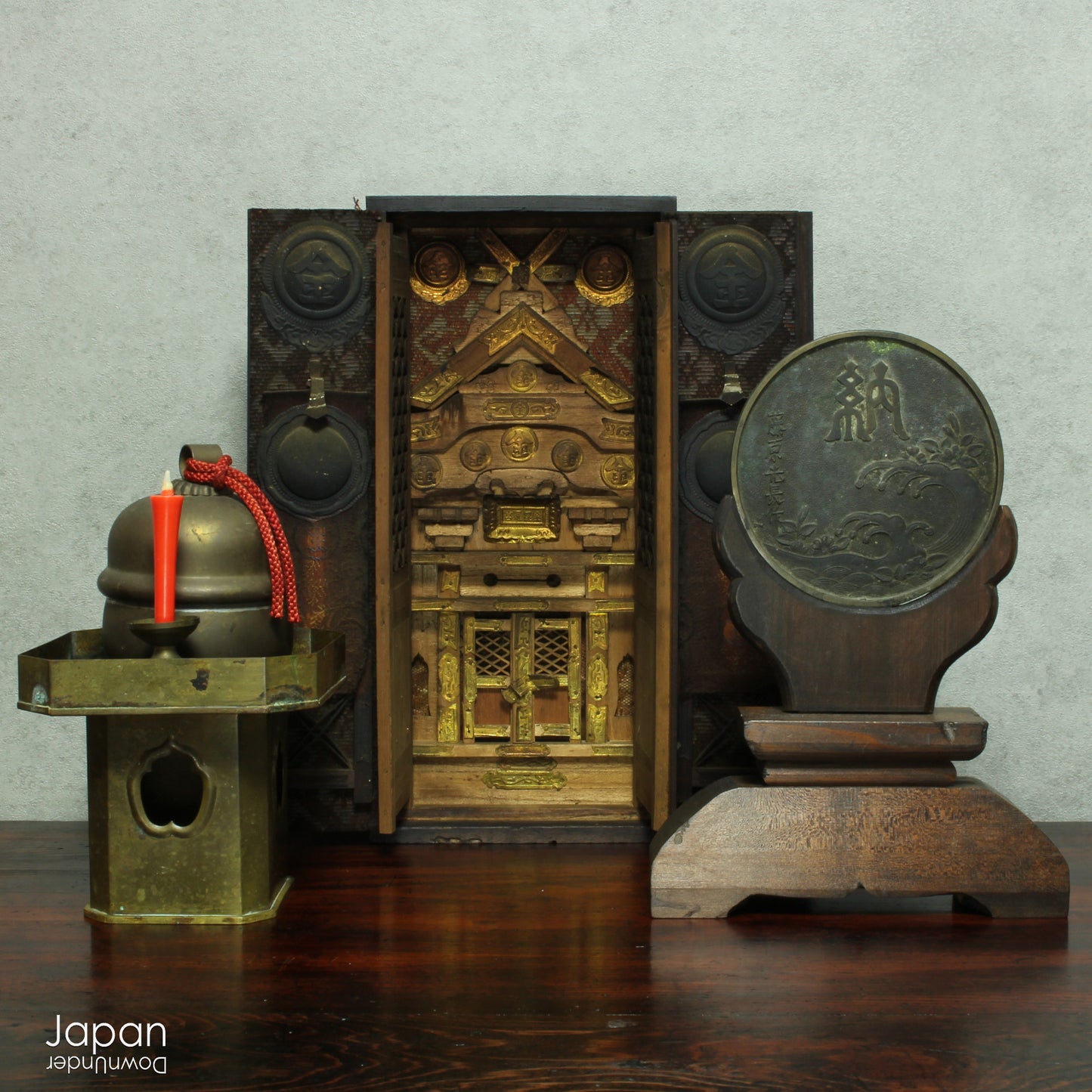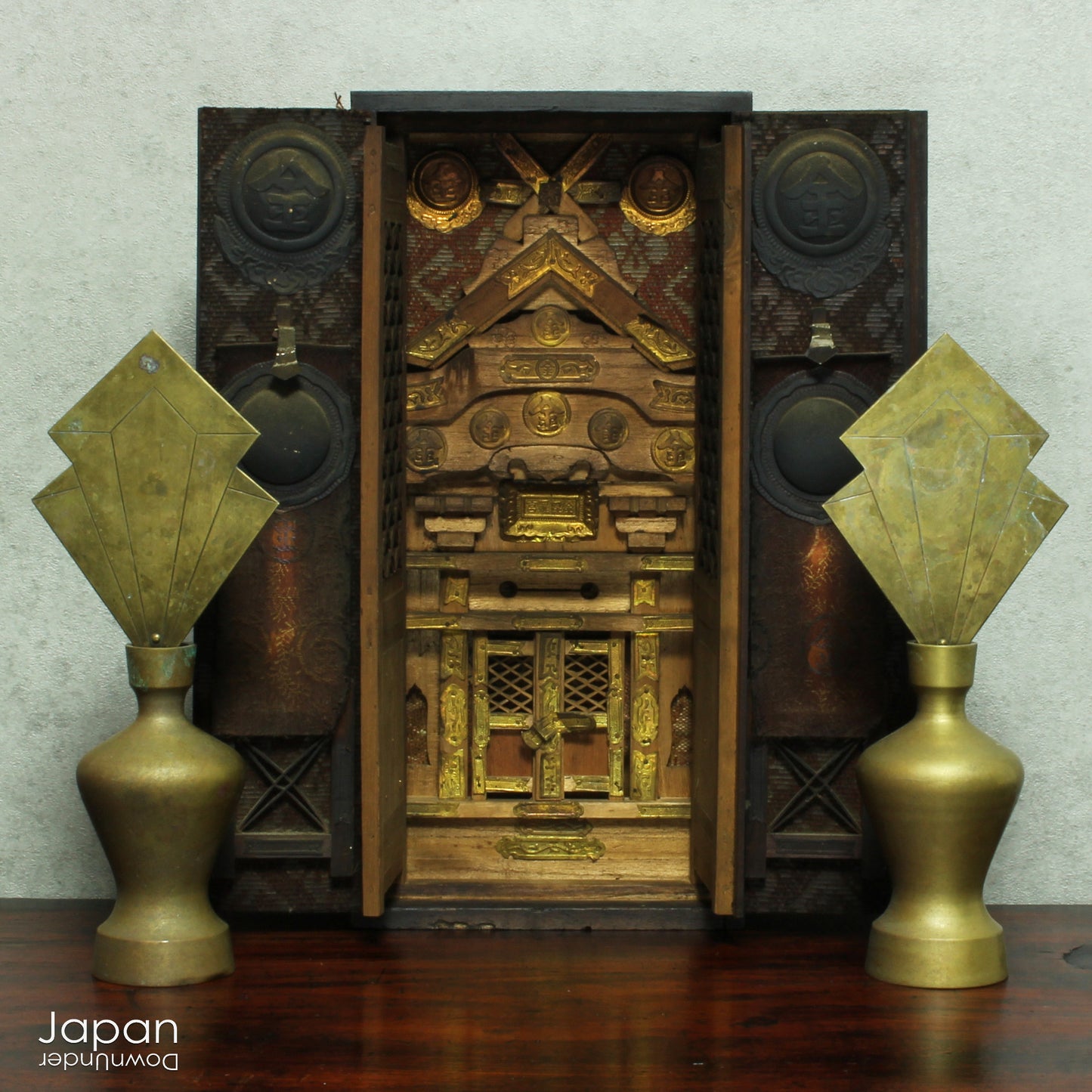JapanDownUnder
rare japanese antique kamidana shinto shrine for business and sea protection - spiritual folk art
rare japanese antique kamidana shinto shrine for business and sea protection - spiritual folk art
Couldn't load pickup availability
Love Japanese Style Like We Do
Bring a sense of spiritual heritage and timeless beauty into your space with this rare Meiji era antique Japanese Kamidana Shinto shrine, a scaled-down replica of the revered Konpira Shrine. Steeped in tradition and believed to offer prosperity in business and protection to sea travelers, fishermen, and sailors, this piece carries deep cultural and spiritual significance - a truly unique addition to any home or collection.
Traditionally, those who made the pilgrimage to Konpira Shrine would purchase a talisman to bring home and place on their household kamidana for daily prayer and offerings. Konpira Shrine enshrines Omononushi-no-Kami and Emperor Sutoku, and has long been worshipped as a powerful protector - especially by those connected to the sea.
This charming miniature Konpira shrine is housed within a double-door wooden box. The outer doors, simple and unadorned, open to reveal the inner surfaces lined with decorative fabric and metal embellishments, along with a circular emblem featuring the kanji "Kin", the first character of "Konpira." Inside is a second set of doors, more ornate, featuring a finely carved kumiko wood lattice design on the upper section and circular metal accents below.
Over the decades, the once light-colored wood and bright yellow brocade have been naturally darkened by soot from the wood stove in the kitchen where the kamidana was usually placed, leaving a rich patina that enhances its character and age.
Opening the inner doors reveals the beautifully crafted miniature Konpira shrine, its lighter wood preserved behind the closed doors. Gilded medallions and intricate metalwork adorn its surfaces. Opening the tiny doors at the entrance to this shrine unveils bamboo sudare blinds, and this is where the talisman from the Konpira visit would have been placed.
Despite its age, this piece remains in solid structural condition, with no cracks or insect damage - a rarity for this item. The fabric and embellishments show a warm, darkened patina from years of devotion, and while some of the metalwork shows age-related wear and two hinges have been replaced, the overall effect is striking and atmospheric. When gently shaken, there is a soft rattle - possibly the original talisman having slipped behind the inner shrine, adding to its mystery and charm.
Whether you're a lover of Japanese culture, a collector of spiritual artifacts, or simply drawn to objects with a story, this one-of-a-kind kamidana is both a conversation piece and a vessel of cultural reverence.
- measures closed 32 cm (12.6”) tall x 15.5 cm (6.1”) across x 6 cm (2.4”) deep.
- measures when doors opened 32 cm (12.6”) tall x 28 cm (11”) across x 6 cm (2.4”) deep.
- weighs 517 gm.
(listing for shrine only)
SHIPPING INFORMATION
- please read our shipping notes in shipping policy.
- we use recycle packaging and wrap for safety, rather than appearance.
ABOUT OUR VINTAGE, ANTIQUE AND OTHER ITEMS
We list pieces we feel are worthy of display. There may be scratches, dents, fading and signs of wear and tear. We try to explain the condition of each item exactly, but may miss something.
Information regarding the item and it’s age is obtained from dealers and our personal research. We do our best to give you the correct information but please be aware that we cannot guarantee this information.
Please message us prior to purchase with any questions you may have about our products.
ABOUT KOMPIRA/KOTOHIRA SHRINE
Kotohira Shrine, located in Kagawa Prefecture on Mount Zozusan (Elephant’s Head Mountain), traces its origins to ancient legends. According to tradition, the deity Konpira arrived from India and chose the mountain as a sacred site, possibly due to associations between elephants and good fortune in Asian religions.
As Buddhism spread through Japan, Konpira became identified with Buddhist figures, including Kubera (leader of the 12 Heavenly Generals) and was also linked to the 11-Headed Kannon. For practitioners of Shugendo, who practiced severe ascetic training in the forests of distant mountains, Konpira was known as Konpira Daigongen, a powerful mountain deity blending Buddhist and native beliefs.
Over time, Konpira was also associated with the Japanese kami Omononushi-no-Kami, believed to have established a heavenly court on the mountain to oversee land and sea. The shrine became known for blessings related to safe sea travel, trade, agriculture, medicine, and prosperity.
In the 12th century, a shrine for ex-Emperor Sutoku was also established on the mountain to appease his spirit after his exile and death in Kagawa. His spirit was feared to have caused natural and political disasters, prompting efforts to honor or contain him.
By the medieval period, Konpira became a popular pilgrimage site. Travelers from the mainland began their journey from a spot marked by a bronze lantern in Marugame City. Pilgrimage was one of the few reasons common people could legally travel, and in some cases, dogs were sent in place of their owners. These ‘Konpira Dogs,’ carried money and ID tags, relying on pilgrims along the route to help them reach the shrine and return with an omamori (lucky charm) for the kamidana (god shelf) of their owner.
During the Meiji era, Japan’s modernization led to the separation of Buddhism and Shinto. As a result, the shrine was renamed Kotohira Shrine, its Buddhist ties were severed, and the main deity was officially recognized as Omononushi-no-Kami. While Buddhist elements still remain, the shrine is now primarily Shinto.
KAMIDANA
Kamidana, literally god (kami) shelf (dana) are miniature household altars used to place an enshrined Shinto kami (god). The enshrined kamifuda (board or paper, representing the god) was that of a clan deity or came from one of the major national shrines. Kamidana became popular in traditional country style minka houses.
Small shrines for tutelary deities, inside a residence, go back to ancient times among the aristocracy. The emergence of the kamidana was closely connected with the development of the domestic Buddhist altar or butsudan, which started the movement of conducting religious rituals in each household.
Kamidana were initially set up to keep Jingu Onusa, charms of the Grand Shrine of Ise, when they began to be widely distributed at the end of the Muromachi period. The Jingu Onusa symbolized Amaterasu Omikami and were considered objects of worship. A special domestic shelf, to respect these charms, was installed and was called Jingu no tana, or shelf of the Grand Shrine. By the mid-Edo era, the institution of the kamidana had spread to most homes as a result of the spread of this Ise cult.
The most common style of kamidana was a plain board forming a shelf, supported by cantilevered brackets from beneath, or stabilized with timber hangers, suspended from the beams above. On this shelf a miniature Shinto shrine was installed to contain the kamifuda. This shrine could be elaborate in design, but unlike the miniature shrine cabinet, or zushi, of the Buddhist altar, the timber was unlacquered. In days gone by, shrines for the kamidana were very expensive for common country people and they were often hand made, by the owner, giving them a lovely rough, simple and rustic appeal.
Kamidana were most often located in a high place, thought to be closest to the heavens and gods, in an area close to an earth floor. As old country kitchens had an earth floor and were a place where many people gathered, they were perfect for the kamidana and prayer. Candles were lit and offerings of rice, fruit, fish, rice and wine were made daily.
Particularly in the homes of farmers, fishermen, merchants and other craftsmen, additional deities with combined Shinto and Buddhist identities found their way to the kamidana. Ebisu and Daikoku-dana were popular. Ebisu, the god of fishing and Daikoku, the god of farming, were particular favorites amongst country folk, whose livelihood depended on agriculture and the ocean. Ebisu and Daikoku were often housed together in a special shrine with a rounded roof, and came to be known as the kitchen gods. Kojin-dana was another popular choice. Kojin was the god of domestic tranquility and good fortune. Inari-dana were also seen. Inari is the Japanese Shinto god who watches over and protects the rice harvest. A temporary toshitoku-dana was set up in almost all homes at the end of the year to welcome and worship the kami of the New Year.
Old Kamidana shrines are a wonderful example of Japanese mingei; a spiritual tool that reminds us of culture and customs of the past.
Share

